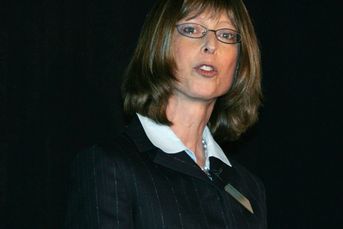Heavy government borrowing, inflationary policies to cut bond prices
The three-decade overall bull market in bonds is dead — and though there are opportunities in some corporate and emerging-markets bonds, the easy money has been made.
The three-decade overall bull market in bonds is dead — and though there are opportunities in some corporate and emerging-markets bonds, the easy money has been made.
Market watchers are warning that investors who seek safety in Treasuries could be in for a major disappointment.
Bonds “are the last bubble to pop,” said Keith McCullough, chief executive of Research Edge LLC, an institutional research firm in New York.
“At these [yield] levels, we don’t see much [profit] left,” said Tim Anderson, the chief fixed-income officer at Riverfront Investment Group in Richmond, Va., which manages about $750 million.
“Certainly, we don’t see anything [left] in Treasuries,” he said.
Since the yield for the 10-year Treasury note peaked at just more than 15% in September 1981, yields have been in a down trend. That has boosted prices on Treasuries and provided investors with total returns that have outpaced stocks in many cases.
RATES TO RISE
Most analysts feel that a combination of economic recovery, heavy borrowing by the government and inflationary policies will drive up interest rates — and push bond prices down.
Some corporate credits still offer attractive yields, but investors shouldn’t expect much in the way of capital gains, analysts said.
“The very good returns year to date — especially on high yield — will be hard to replicate,” said Steve Huber, a fixed-income portfolio manager at T. Rowe Price Group Inc.
Meanwhile, the 28-year bull market in bonds — and the corresponding collapse of the equity markets in 2000 and 2008 — have created an exceptional market anomaly: The long-term performance of bonds and stocks, for all periods of more than 25 years, is roughly the same, according to a June report from The Leuthold Group LLC, a market research firm in Minneapolis.
For example, over the 40-year period ended March 31, the average compounded total return for the S&P 500 bettered 10-year Treasuries by just 30 basis points.
That is the lowest performance differential recorded since 1926, according to Leuthold, even lower than the 40-year period ending in the second quarter of 1932.
For the 10-year period ended March 31, the differential was -9.78% for stocks — also the worst ever recorded. At the end of June, the 10-year return differential stood at -8.72%, the second-worst reading ever for stocks, and a bit worse than June 1939.
“These are extraordinary times,” said Eric Bjorgen, a senior research analyst at Leuthold.
With the horrible long-term numbers from stocks, investors have been flooding into fixed-income investments.
New net cash flows into stock funds were just $12 billion year-to-date through July, according to the Investment Company Institute. That’s a fraction of the $141.6 billion that flowed into taxable bond funds.
That divergence continued into August, according to ICI estimates.
Leuthold says the questionable investor behavior is due to the poor long-term record for stocks.
“We haven’t seen the kind of fervent participation [in stocks] that you would expect coming off cyclical lows,” Mr. Bjorgen said.
But those spooked investors could be making a huge mistake.
In past periods when stock/ bond performance differentials were at the fifth percentile or higher, as they are now, median 10-year subsequent annual compound total returns on the S&P 500 were 18.1%, versus 10.8% for the other periods, according to Leuthold.
“We are early on in the new cycle of this regression to the mean,” Leuthold said in its June report.
The relatively poor performance of equities hasn’t surprised Robert Arnott, chairman of Research Affiliates LLC, an index developer.
Mr. Arnott has long questioned what he believes have been overly rosy assumptions about long-term equity returns.
The key factor is how cheap stocks are when bought, he said.
“When the market hit bottom [in March] our models said stocks were way more attractive than bonds,” Mr. Arnott said.
But in the subsequent rebound, growth stocks have become too expensive, while deep value stocks — financials, industrials and consumer discretionary — remain attractive, he said.
At the same time, some bond analysts still like corporate and emerging-markets debt, although they say the easy money has been made since the turnaround in March.
“There is still an opportunity in investment-grade corporate bonds,” Mr. Anderson said.
Over the longer term, he feels, intermediate-term high-yield and emerging-markets debt will be attractive.
“And I think you have to broaden your perspective and start looking at dividend-paying stocks,” Mr. Anderson said.
“Just clipping the coupons [on corporate bonds is] still pretty attractive,” Mr. Huber said, with high-grade corporates yielding 5% to 6%.
Credit spreads could continue to narrow, providing some cushion even if Treasury rates rise, he added.
But Thomas Atteberry, co-manager of the FPA New Income Fund (FPNIX) from First Pacific Advisors LLC, is more pessimistic.
“You need to have short maturities of five years and in,” he said. “You shouldn’t have credit exposure at this point.”
Once rates move up, “then you [will] get compensated for the risk,” Mr. Atteberry said.
E-mail Dan Jamieson at [email protected].
Learn more about reprints and licensing for this article.





